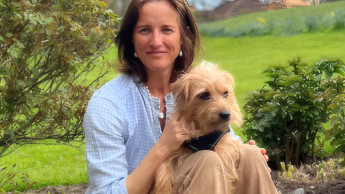

With pet owners increasingly indulging their dogs and cats, sales of premium pet food are booming. However, incumbent players face a growing challenge from a plethora of smaller competitors who are resonating with consumers, states the market survey company Euromonitor International.
Premium products have undoubtedly been the star performers of the dog and cat food market in recent years. According to Euromonitor International data, global value sales of these products exhibited a compound annual growth rate (CAGR) of 5.7 per cent over the 2006-2011 period. By the end of this period, annual value sales in this category are set to be worth $65.8 billion. As a result of this strong performance, the share of global dog and cat food sales accounted for by premium products rose by a percentage point, to 40.4 per cent, between 2006 and 2011 and appears poised to surpass that of mid-priced products. US market defies economic weakness In North America in particular, strong sales of premium products have been driven by pet humanisation, helping the category to defy the weakness of the US economic recovery over the past couple of years. In the Californian town of Folsom, Ethan Boyer, manager of Western Feed & Pet, says that “People seem to have cut back on going out to dinner and movies to care for their pets, which many of them say are like their children. They’re willing to spend the saved extra money on their pets”. However, established brands such as “Iams” and “Hill’s Science Diet” are coming under increased pressure from smaller manufacturers. According to Euromonitor International data, the proportion of premium sales accounted for by the four largest players in North American premium dog and cat food (Nestlé SA, Procter & Gamble, Colgate-Palmolive and Mars Inc.) fell from 86.2 per cent to 82.9 per cent between 2008 and 2010, while that of small producers jumped from 8.9 per cent to 11.5 per cent. This shift towards smaller manufacturers has been primarily due to a boom in consumer interest in “alternative” pet foods, such as raw, human-grade and natural offerings. For example, Idaho-based Dynamite Specialty Products saw sales of its “all-natural” Ultimate Dog Food jump by 112 per cent during 2010. This growth has been fuelled in part by some owners’ mistrust of large incumbent players, and this is reflected in a plethora of blogs, such as truthaboutpetfood.com, which regularly excoriate what is pejoratively referred to as “Big Pet Food”. Brazil overtakes Japan Premium dog and cat food is also exhibiting strong growth rates in emerging markets, most notably Brazil, where value sales enjoyed a CAGR of 12.3 per cent over the 2006-2011 period. Indeed, Euromonitor International predicts that the Brazilian market will be worth almost…
Related articles
Read also

 Menü
Menü






 Special issue 12/2011
Special issue 12/2011












 Newsletter
Newsletter